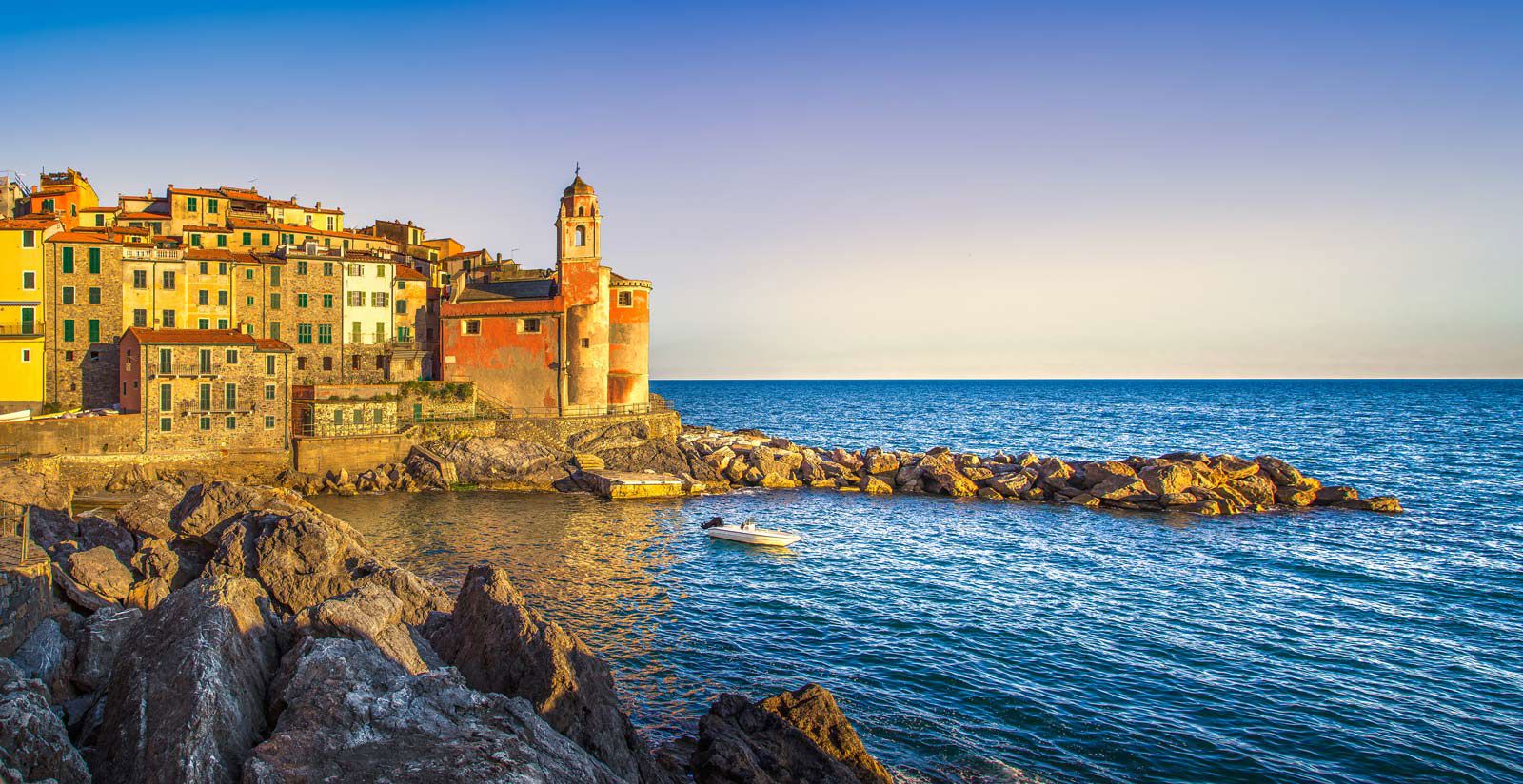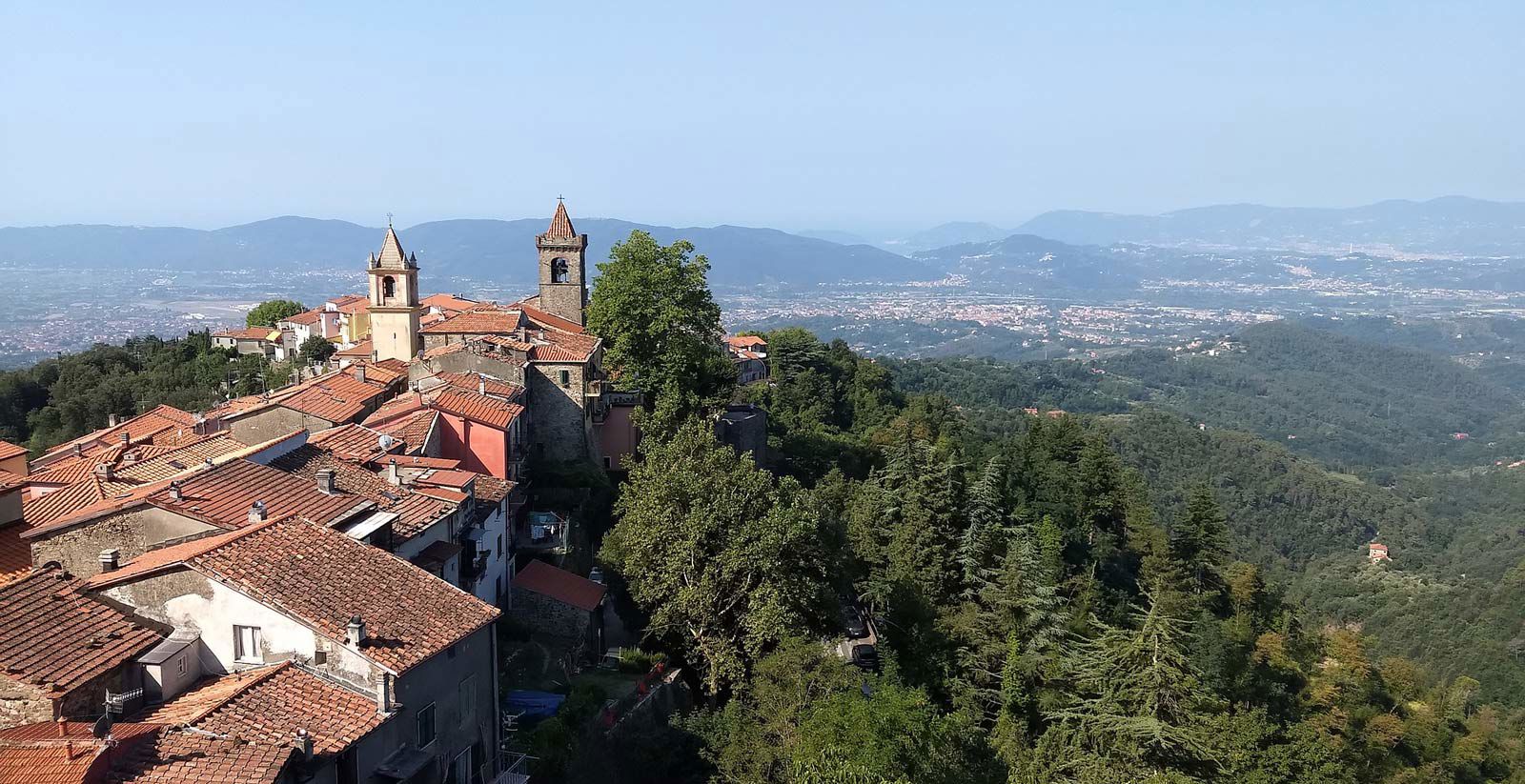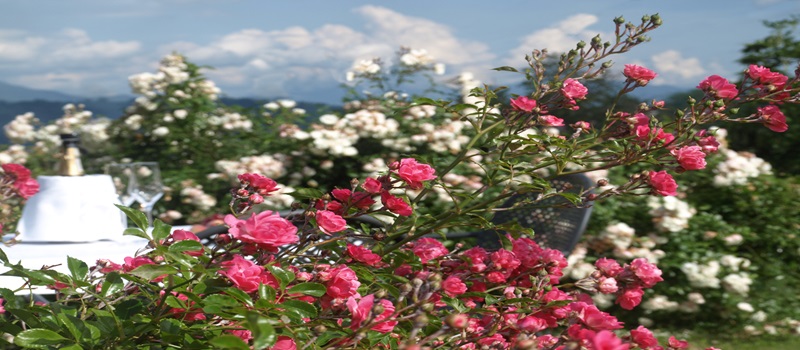Lunigiana & Surroundings
Lunigiana, from the Tuscan-Emilian Apennines to the sea, is a land to be travelled, discovered and savoured, to experience a quality holiday in harmony with nature. Along the Via Francigena, one of the oldest routes (mentioned for the first time by the Archbishop of Canterbury Sigerico in 994) and, for centuries, the most frequented route to Rome, pilgrims, merchants and armies have left traces of their passage in castles, parish churches and walled villages that still characterise an intact and almost impregnable natural landscape. Castles and chateaux, parish churches and Romanesque churches, medieval villages and aristocratic buildings follow one another in a journey through history and hospitality that offers strong emotions throughout Lunigiana: Summer and winter sports facilities, thermal cures, opportunities for excursions and speleological interest, alternating with folklore and local traditions are the ingredients to enrich the tourist attractions of a strip of land suspended between the mountains and the sea, flanked by the Cinque Terre of Liguria and the cities of art of Tuscany, immersed in an intact and uncontaminated nature. The numerous municipalities offer endless possibilities for excursions and interesting visits, here we can briefly mention
(www.terredilunigiana.com)
Pontremoli
Pontremoli: northern gateway to Lunigiana and a typical medieval town, it was created by the aggregation of a village around its castrum. From the Cisa state road, the Piagnaro castle, which has been completely restored and houses the Museum of Stele Statues, and the town's houses seem to defend its historic centre, protected to the north by Porta Parma and bordered to the south by the confluence of the Magra and Verde rivers. The town has numerous monuments such as the Cathedral of S. Maria del Popolo (17th century) with its Baroque interior, the Campanone, a tower of the ancient curtain wall that divided Guelphs and Ghibellines, the Church of S. Colombano and the Church of S. Pietro with its sculpture of the Pilgrim's Labyrinth, the Church of SS. Annunziata dating from 1471. Pearl of Lunigiana, in front of the small baroque masterpiece of the Church of Nostra Donna and the Teatro della Rosa, one of the first in Italy, recently restored and rich, inside, in baroque elements The town is the seat of the Bacarella Prize (third Sunday in July)
Fivizzano
Considered the Florence of Lunigiana, Fivizzano has always been an important centre, as evidenced by the large number of works of art and stately palaces such as palazzo Cojari, the town hall, palazzo Fantoni-Chigi and palazzo Benedetti. Fivizzano gave itself to the Medici in the 15th century and remained in their possession until the coming of the Lorraine. The walls of Fivizzano were erected by order of Cosimo de' Medici in 1540, while the Baroque fountain in the square, overlooked by the church dedicated to Saints James the Apostle and Anthony, was built by Cosimo III in 1683. Further on, towards Porta Sarzanese, are the former Augustinian convent and the Oratory of San Carlo or the small church of the prisons. Beyond the walls, the village of Verrucola houses the castle of the same name, built by Spinetta Malaspina il Grande. Fivizzano was the birthplace of Jacopo da Fivizzano, who was among the first to print with movable type in 1471. Every summer, the Disfida degli Arcieri di Terra e di Corte (Archers of Land and Court Challenge) and the Fivizzano Sapori (Fivizzano Flavours) festival are held. In the hamlets, we can visit the parish church of San Paolo di Vendaso, the parish church of Pognana, the village of Soliera, the villages of Gragnola, Vinca, Sassalbo and Viano. Also, don't miss a visit to the Frignoli Botanical Garden and the Equi Terme caves.
Filattiera
Filattiera: ancient Ligurian-Apuan settlement; medieval capital of the Malaspina family of Spino Fiorito. To visit: Church of S. Giorgio with Leodgar's tombstone and medieval defence tower of the castle (14th century). At the foot of the village, the Pieve di Sorano (8th-10th century), a fine example of Romanesque art. Nearby: Ponticello, typical tunnel village; Caprio, interesting village with remains of tower houses.
Bagnone
Bagnone: the castle, perched on the promontory and, further down, the village, characterise this town. Sights: marquis castle with cylindrical tower (14th cent.) common to many castles in Lunigiana. Nearby: village and castle of Castiglione del Terziere, (11th cent.); Jera, small mountain village offering splendid views.
Mulazzo
Mulazzo: Village of Byzantine origin that became capital of the Malaspina dello Spino Secco. To see: Octagonal tower, called "of Dante", because Dante Alighieri stayed there as a guest of the Malaspina, remains of the Malaspina castle (13th-15th century), imposing arches of the ancient aqueduct (15th century); Alessandro Malaspina Study Centre, 18th century navigator. Nearby: on the road to Gavedo, site of a 16th century castle, visit the ancient Romanesque church of S. Martino (8th century); Montereggio: a characteristic village surrounded by chestnut trees and home of wandering booksellers; the medieval Monastery of the Madonna del Monte with a 14th century Marian icon.
Aulla
Aulla: town dominated by the Brunella fortress (15th-16th century), now home to the Lunigiana Natural History Museum. Nearby: the village of Bibola with its spiral structure and the remains of a mighty Castle (XII-XIII); the medieval walled village of Caprigliola with its cylindrical Tower (XII).
Fosdinovo
Fosdinovo: Set within the walls of its village, where you can breathe sea air and mountain wind, stands the Malaspina Castle (XIV-XVII), Church of S. Remigio (1367), panoramic viewpoint. Nearby: Caniparola and the Malaspina villa. Luni, Sarzana, Cinque Terre.
(fonte: terredilunigiana.com)
SURROUNDINGS
Portofino
Portofino is a splendid and renowned tourist resort on the Ligurian Riviera, located in a picturesque inlet between the Gulf of Tigullio and Punta Carega. Portofino has always been a favourite destination for thousands of tourists, especially well-known personalities from the world of culture and entertainment. Since 1995 Portofino has been listed among "The Jewels of Europe", the club that groups together the most important European tourist centres.
Forte dei Marmi
One of the most popular seaside resorts in the Tyrrhenian Sea. Forte dei Marmi clusters around a wharf built in the 16th century for loading Apuan marble and protected since 1788 by a fort built by Leopold I, visible in the centre of Piazza Garibaldi. Nobles from all over Europe, diplomats, businessmen and captains of industry, artists and famous people have built splendid villas here, hidden away and protected by the green of the pine forest, choosing its fine sands for their holidays and rest.
Viareggio
Elegant and refined, Viareggio is one of the most famous places on the Versilia coast and a world tourist destination. It is the centre of entertainment, home of Carnival and of night-time sophistication with its avant-garde and high-class clubs. The lights of the night give way to a lively and colourful landscape in summer, to splendid sunsets and tranquillity in winter. And yet Viareggio is never far from the spotlight, offering a variety of tourist attractions in any season of the year.
Carrara
The spectacular marble quarries in the Apuan Alps reflect a striking image. The precious white stone has been quarried here since Roman times. Since then it has been used for all kinds of purposes: from simple objects to the most famous works of art and architecture. In the past, blocks of marble were transported using an ancient manual technique: the lizzatura, revived every year thanks to the courage and skill of the last living lizzatori. In Carrara's art workshops, marble museum and open-air exhibitions, you can see the history and working of marble up close.
Montemarcello
Montemarcello is a splendid village that dominates, from the top of the Caprione promontory, the Gulf of La Spezia, the open sea, the Versilia coastline and the mouth of the River Magra. The landscape is certainly one of the most evocative of the Ligurian coast, which borders on Tuscany at this point. Carrara is not far away and looking eastwards, beyond the Luni plain, it seems as if one could touch the Apuan Alps and the white streaks of the marble quarries. The village owes its name to the Roman consul Claudius Marcellus, who in 155 B.C. defeated the Ligurian Apuani who lived in the area. Its origin is very ancient and throughout the Caprione area you have the feeling of moving through centuries of history. You can walk along the Roman road, still paved with stone in many places, to reach Bocca di Magra where there is a splendid thermal villa dating back to the 4th century BC, or visit the nearby Luni with its archaeological excavations and Roman amphitheatre.
Equi Terme
Equi Terme is a charming village located in Tuscany at the foot of the steep slopes of the northern Apuan Alps, protected by the Regional Park of the same name. Equi is a renowned tourist resort known for the possibility of thermal cures, thanks to the spring of sulphurous water with its many therapeutic qualities. The most enchanting karst phenomenon is the Buca and the Grotte di Equi, an extensive underground karst complex formed over the millennia by erosion caused by underground watercourses. Thanks to the intervention of the Municipality of Fivizzano and the Regional Park of the Apuan Alps, the front part of the Equi caves, called the Buca, can now be visited by tourists with a short but suggestive route - lasting 20 minutes - within everyone's reach, which allows you to go through tunnels and rooms of great interest.








